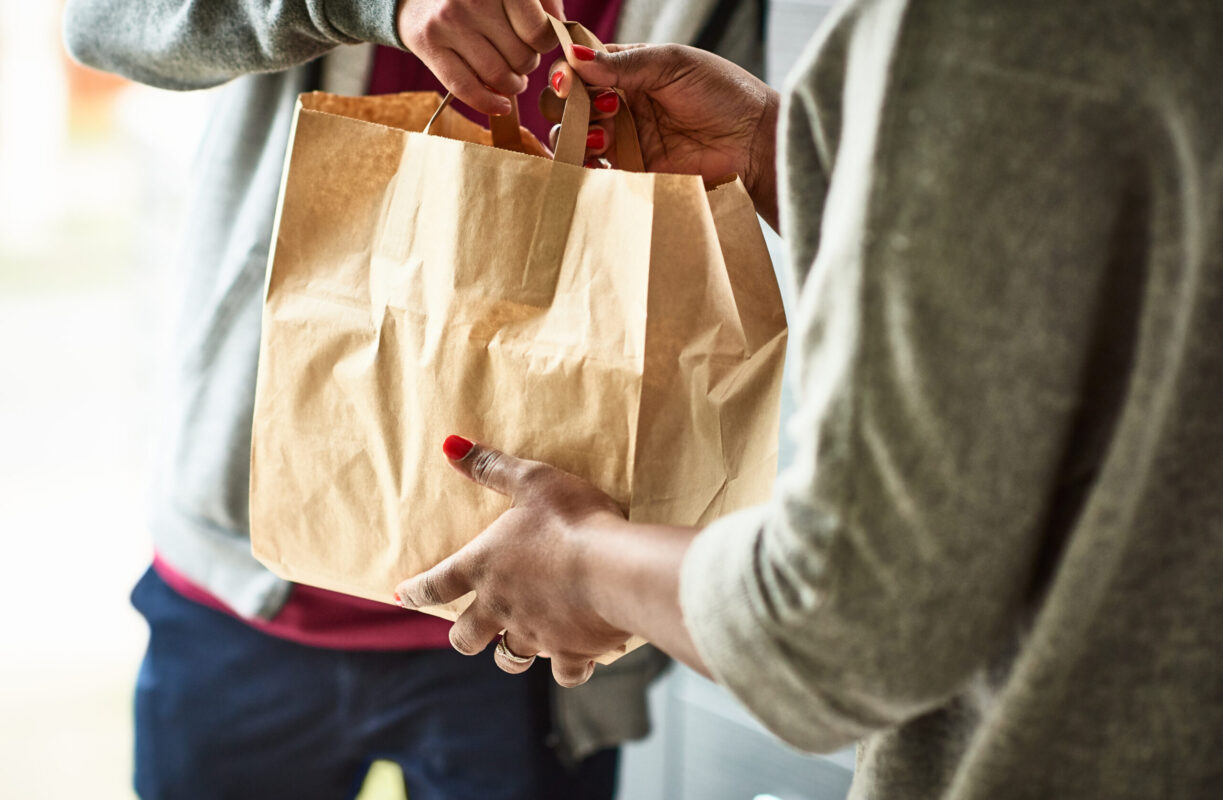If your first reaction to the news of a friend’s loss or need for help is to bring them food, you’re not alone. Supplying meals to loved ones in their time of need is a long-standing tradition for many cultures.
Many times, a kind-hearted volunteer will set up a meal train or similar scheduling tool to organize meals to help a neighbor or loved one. But while volunteers are well-intentioned, not everyone is aware of the etiquette associated with taking a meal to a friend.
WellTuned spoke with Sarah Provence, a registered dietitian and nutritionist with BlueCross BlueShield of Tennessee, to learn more find out what to consider when taking a meal to a friend.
Getting started
Sarah Provence: There’s nothing quite as comforting as having a meal prepared for you during a hard time. Here’s some advice to help you plan:
Sign up. Try to sign up for a spot on the meal calendar as soon as you can, so you can get a date that works with your schedule.
Ask about allergies. The last thing you want to do is make them sick or give them an allergic reaction. Always ask about food allergies and food sensitivities. Also, people recently released from the hospital or taking new medications may need to follow a special diet, so be sure to ask about any ingredients to avoid using.
Consider how much food to make. Are you going to be feeding one person? Two? Four? How many of the people are adults and how many are children? This information can help you plan the quantity of food to prepare.
Menu ideas to consider
Sarah Provence: Once you have a sense of what your loved ones can and can’t eat, it’s time to select a dish to make. A few good tried-and-true dishes that you could make and deliver include:
- Shredded chicken bowls. Top some brown rice and black beans with shredded chicken and other toppings, such as salsa, cheese, lettuce, peppers and onions.
- Baked ziti and a green salad
- Breakfast casserole, with spinach, onions, mushrooms, and bell peppers, and a side of fruit salad
- Other casseroles, such as chicken-and-rice casserole or lasagna
You’ll want to make something that travels well. For example, fried food—in addition to not being very healthy—doesn’t usually keep well and tends to get soggy. You may want to avoid seafood, since it’s difficult to keep at the right temperature. Don’t forget that you have to transport the food, so keep in mind the container you may need to use.
If you don’t cook—or don’t feel confident in your cooking skills—it’s fine to order take-out or arrange for food delivery.
Be safe during food preparation
Sarah Provence: As you prepare food, keep these safety tips in mind:
Reschedule if you’re sick. If you or anyone in your household is feeling sick, don’t take any risks. Reschedule your meal so you don’t accidentally spread any illness to your friend or family member, which would be especially dangerous if they have a new baby or a chronic illness.
Thaw food in the fridge. Never thaw frozen food at room temperature. There’s a chance that the food can reach the “danger zone” temperature, running a greater risk of foodborne illness. Thaw in the fridge or under running water instead.
Remember good hygiene. Start with a clean kitchen, counter, and utensils. Throw away any expired or spoiled ingredients. Always wash your hands with soap to prevent the spread of germs. And finally, make sure that you cook all foods, especially meat, to a safe temperature; a food thermometer can help with this.
Deliver or drop off tips
Sarah Provence: Once you’ve made a dish, you also need to make sure it is delivered successfully.
Don’t use your favorite pans. Consider bringing the meal in disposable pans or bowls so the recipient doesn’t have to worry about returning them to you. Or you can opt for reusable containers that you don’t want back.
Include instructions. Tell them how to warm up or prepare the food so the recipient doesn’t have to guess what to do. (Let them know that you don’t need the containers back, too!)
Find out if there are any specific drop-off requests. Some recipients may not be receiving visitors, so find out if you can leave the meal in a cooler or other convenient location. Some people request meal deliveries at certain times, so be sure to honor their wishes. In some cases, it may be better to deliver a frozen meal, so the person can heat it up at a later date. And if you’re not sure what the recipient wants, be sure to ask!
“It’s a good idea to have a go-to meal that you can easily prepare and take to people,” says Provence. “It’s fine to take the same recipe to everyone, too. You don’t have to think up something new each time. It’s probably not a good idea to experiment or try something new when you’re taking a meal to someone in need, though. Stick with the tried-and true dishes that work—or at least try a new recipe out on your own family first.”
More from Sarah Provence on WellTuned
Get more information about specific health terms, topics and conditions to better manage your health on bcbst.com. BlueCross BlueShield of Tennessee members can access wellness-related discounts on fitness products, gym memberships, healthy eating and more through Blue365®. BCBST members can also find tools and resources to help improve health and well-being by logging into BlueAccess and going to the Managing Your Health tab.


